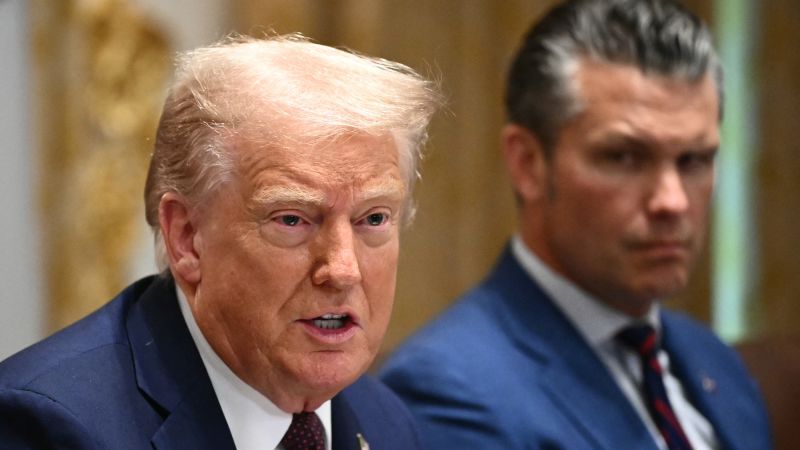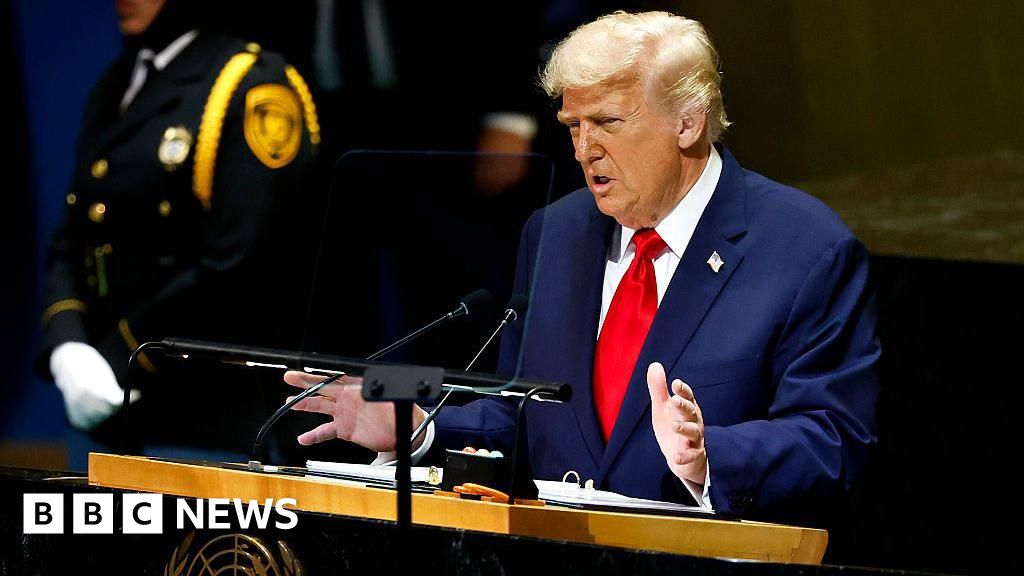Trump to Attend High-Level Military Gathering in Virginia

Trump to Attend High-Level Military Gathering in Virginia
President Donald Trump is set to attend an unexpected assembly of senior military leaders in Virginia this week. This event, reportedly involving top generals and admirals, is shaping up to be more than just a routine meeting. Sources suggest the gathering has been informally described as a “pep rally,” emphasizing morale and unity among the highest ranks of the U.S. military command. Trump's presence adds a significant political dimension to the event, reflecting his ongoing engagement with defense leadership.
Significance of the Meeting
The surprise nature of the gathering signals a strategic move to reinforce relationships between the Commander-in-Chief and military officials. It offers an opportunity for direct dialogue on national security priorities and military readiness. Given the current global tensions, such face-to-face interactions may help clarify defense policies and boost confidence within the military hierarchy. This meeting could influence future military directives and highlight Trump’s role in shaping defense strategies.
About the People Mentioned
Donald Trump
Donald John Trump, born June 14, 1946, in Queens, New York, is an American businessman, media personality, and politician. He graduated from the University of Pennsylvania’s Wharton School in 1968 with a degree in economics. In 1971, he took over his family’s real estate business, renaming it the Trump Organization, through which he expanded into building and managing skyscrapers, hotels, casinos, and golf courses. Trump gained widespread fame as the host of the reality TV show *The Apprentice* from 2004 to 2015, which helped establish his public persona as a successful entrepreneur. Trump entered politics as a Republican and was elected the 45th president of the United States, serving from 2017 to 2021. His presidency was marked by significant policy actions including tax cuts, deregulation, the appointment of three Supreme Court justices, renegotiation of trade agreements (notably replacing NAFTA with the USMCA), and a focus on immigration control including border wall expansion. He withdrew the U.S. from international agreements such as the Paris Climate Accord and the Iran nuclear deal, and engaged in a trade war with China. His administration’s response to the COVID-19 pandemic was criticized for downplaying the virus’s severity. Trump was impeached twice by the House of Representatives—first in 2019 for abuse of power and obstruction, and again in 2021 for incitement of insurrection—but was acquitted by the Senate both times. After losing the 2020 election to Joe Biden, Trump challenged the results, culminating in the January 6, 2021, Capitol riot. He remains a central figure in American politics, having won the 2024 presidential election and returned as the 47th president in 2025, continuing to promote policies aimed at economic growth, border security, and military strength[1][2][3][4].
About the Organizations Mentioned
U.S. military
The **U.S. military** is a vast and multifaceted organization tasked with defending the United States and its interests globally through land, sea, air, space, and cyber operations. It comprises six main branches: the Army, Navy, Marine Corps, Air Force, Space Force, and Coast Guard, each with specialized roles ranging from ground combat and naval dominance to space operations and maritime security[1][3]. Historically, the U.S. military has evolved from its Continental Army roots during the American Revolution into the world's most powerful and technologically advanced military force. It operates under the Department of Defense (DoD), headquartered at the Pentagon in Virginia, and functions under civilian oversight through the Secretaries of the Army, Navy, and Air Force. The Coast Guard operates under the Department of Homeland Security in peacetime but can be transferred to the Navy during wartime[1]. As of early 2025, the U.S. military includes approximately **2.86 million personnel**, making it the third-largest active military worldwide by size, following China and India. This includes about 1.31 million active-duty troops and nearly 765,000 National Guard and Reserve members. The Army remains the largest branch, followed by the Navy, Air Force, Marine Corps, Coast Guard, and the newly established Space Force[2]. Despite reductions since the Vietnam War peak, the force remains robust and technologically advanced, continuously modernizing to address evolving global threats[5][6]. Key achievements include maintaining unmatched global power projection capabilities, pioneering advanced technologies in aerospace, cyber warfare, and intelligence, and successful coordination in multinational operations such as NATO missions. The military’s strategic initiatives like the Army Modernization Strategy and the integration of new space and cyber capabilities underscore its commitment to future readiness and multi-domain operations[5]. Currently, the U.S. military is undergoing reforms and expansion plans such as the proposed Project 2025, which aims to increase the Army’s size by 50,00









